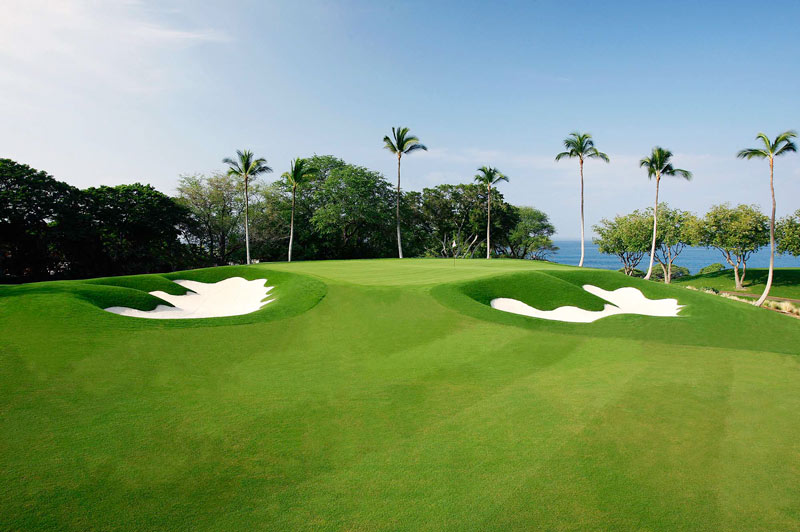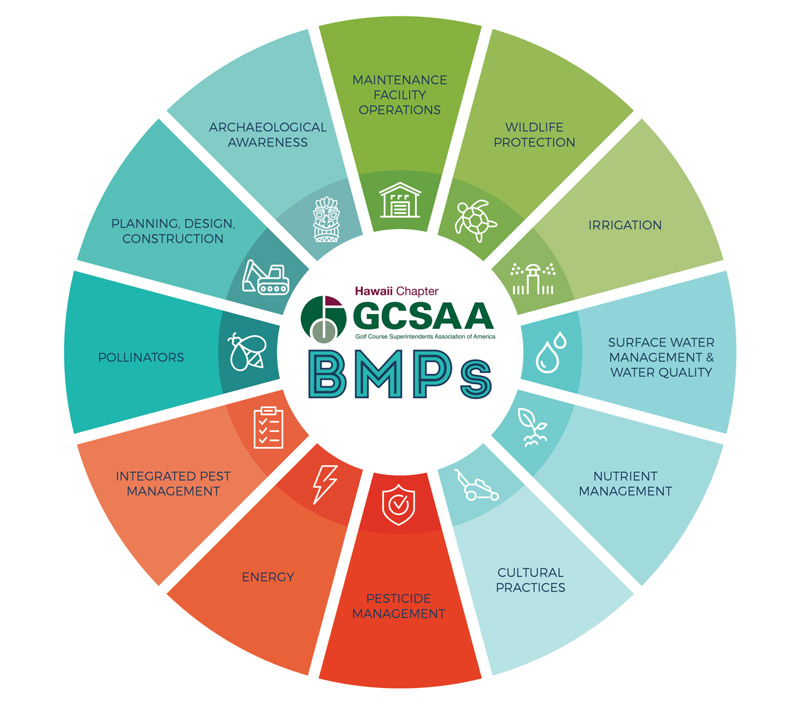
Mauna Kea Resort on the Big Island of Hawaii. The golf course has partnered with outside organizations on a number of environmental initiatives, among them a project to protect nesting areas for the state’s official bird, the nene goose. Photo courtesy of Scott Main
The Hawaii GCSA has published the Hawai’i Handbook of Golf Course Maintenance Best Management Practices, a resource that promotes environmental stewardship and supports optimal course conditions.
The Hawaii BMPs were developed in part using the BMP Planning Guide and Template from GCSAA, which was funded by the association’s Environmental Institute for Golf (EIFG) through support from the USGA.
The Hawaii GCSA received a $10,000 BMP grant from GCSAA, funded in part by the PGA Tour. The BMP grant program administers funding through the EIFG to GCSAA-affiliated chapters for developing new guides or updating existing guides, or for verification programs. GCSAA’s goal is to have all 50 states offer established BMPs by 2020.
The Hawaii BMPs provide guidance in 12 areas, among them archaeological awareness, wildlife protection, surface water management and water quality, and integrated pest management.

The Hawaii BMP handbook aligns with the state’s Sustainable Hawai’i Initiative, a set of conservation and sustainability goals.
“We’re proud to release the handbook,” says Scott Main, CGCS, president of the Hawaii GCSA and director of agronomy at Nanea Golf Club in Kailua-Kona, Hawaii, who was co-chair of the Hawaii BMP steering committee. “The HGCSA encourages its 125 members to perform at the highest standards with ongoing care and respect for the environment. It’s important for collaboration within our communities.”
GCSAA members who were on the Hawaii BMPs steering committee included Main; co-chair Gina Rizzi, president of Radius Sports Group; Michael Atwood, superintendent at Wailea Golf Club; Luke Bennett, superintendent at Kohanaiki Club; Zhiqiang Cheng, Ph.D., associate professor at the University of Hawaii at Manoa; Joseph Przygodzinski, agronomy manager at Kohanaiki Service Co.; Joseph Vittum, superintendent at The Club at Kukui’ula; and Les Jeremiah, CGCS, superintendent at Hawaii Kai Golf Course.
Other organizations who contributed to the BMPs included the University of Hawaii, sustainability consulting firm Radius Sports Group, and the Hawaii departments of Health and Agriculture.
“Our efforts can help conserve resources and enhance community relations, plus support jobs, golf rounds and occupancy levels to drive local economic impact,” says Main. “We appreciate GCSAA, USGA and the PGA Tour, in addition to our local and national affiliate partners who have supported the handbook.”
View all state BMP documents and learn more about GCSAA’s BMP program.